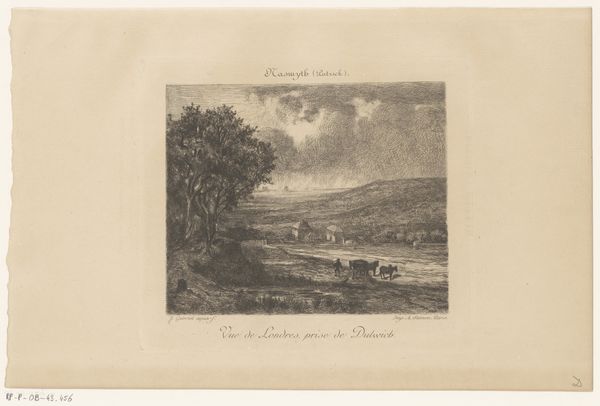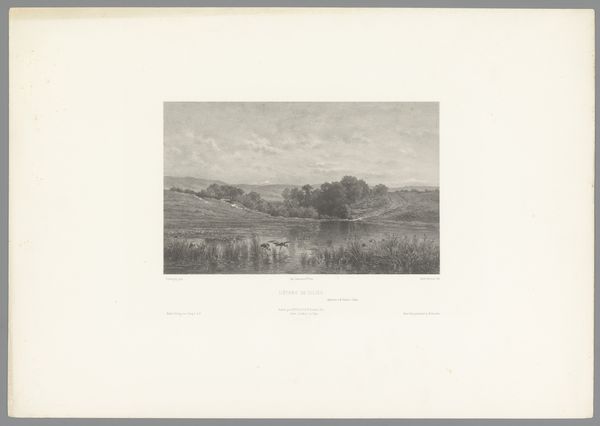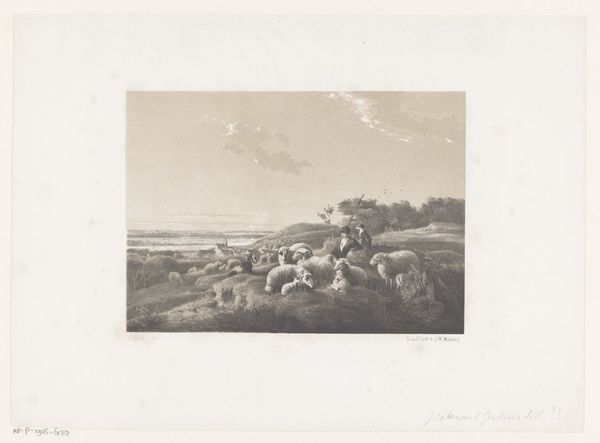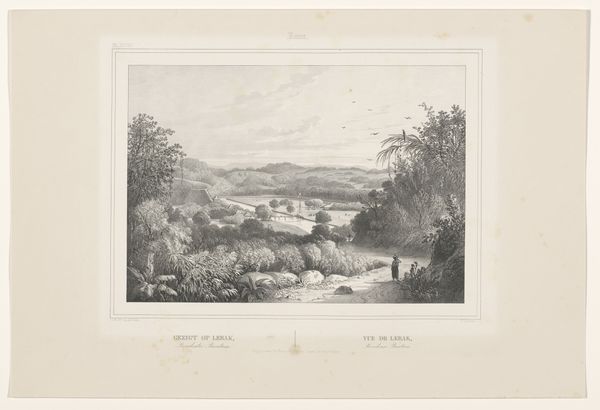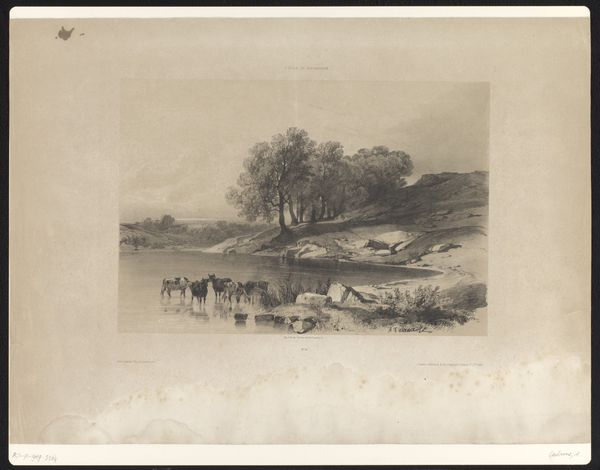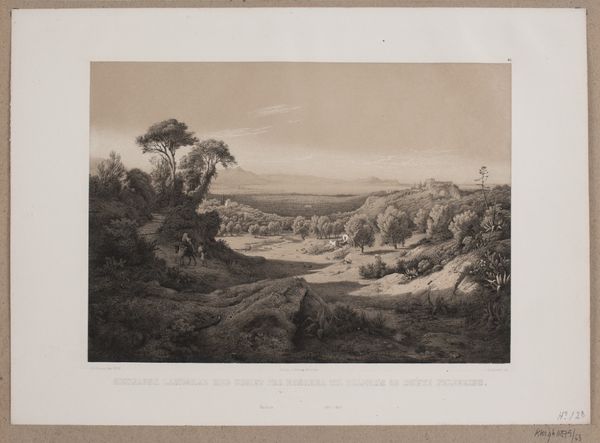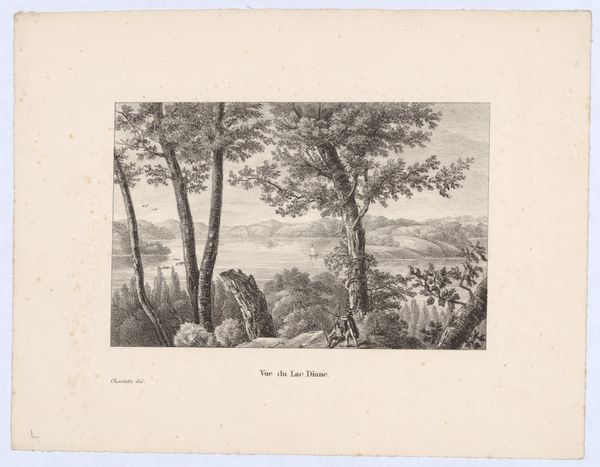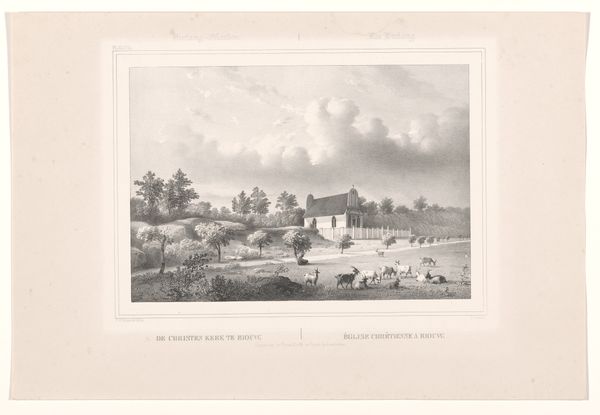
Dimensions: height 394 mm, width 530 mm
Copyright: Rijks Museum: Open Domain
Curator: This is "Figuren halen water nabij Jeruzalem," or "Figures Drawing Water Near Jerusalem," an engraving created by François Stroobant in 1852. The print depicts a scene just outside the city, focused on a group of figures gathered by a small body of water. Editor: It has an ethereal quality, almost like a dream. The pale grays and the muted tones create a feeling of stillness and contemplation. The figures almost blend into the landscape itself. Curator: Precisely. Stroobant uses light and shadow quite masterfully to direct our eye, establishing a distinct spatial hierarchy. The tonal range emphasizes the textures and contours, thereby creating a sense of depth. The formal elements guide the viewers and reinforce the artwork's aesthetic qualities. Editor: But this also strikes me as an example of Orientalism, presenting a Westernized, perhaps romanticized, vision of the 'Orient.' The figures are rendered almost generically; their identities are subsumed into an exotic 'other.' Is the intention to document reality, or to construct a particular vision of the Middle East for a European audience? Curator: It would be careless to neglect the context of production and reception. During the nineteenth century, such prints were valuable visual documents that transmitted images of distant lands to an increasingly curious European audience. Moreover, Stroobant's approach reflects the Realist tendency towards depicting scenes with careful attention to detail, evident here. Editor: Indeed. And beyond visual accuracy, prints like these carried heavy social implications. Who had access to such imagery, and how did these representations impact European views on the Middle East? This print, while aesthetically appealing, becomes an artifact deeply entangled with colonialism and power dynamics. It invites us to consider our position as viewers. Curator: Yes, analyzing its formal elements illuminates how Stroobant organizes the composition. The spatial arrangement of foreground, middle ground, and background adds layers to the picture. Editor: Approaching the piece from diverse viewpoints enhances how we engage with this landscape. The representation of place is imbued with political weight. Curator: A close analysis does offer critical insight into its lasting impact on both art and history.
Comments
No comments
Be the first to comment and join the conversation on the ultimate creative platform.

